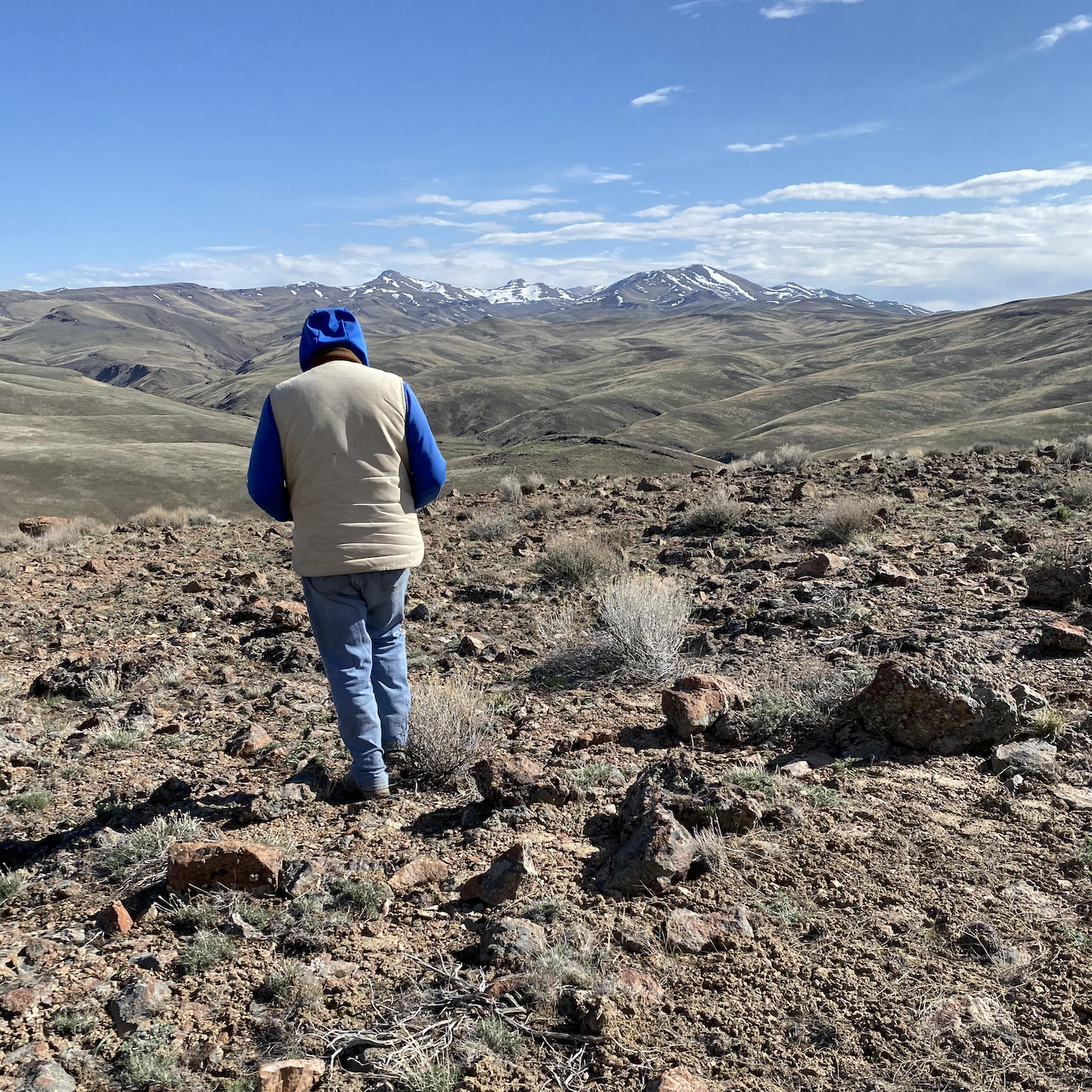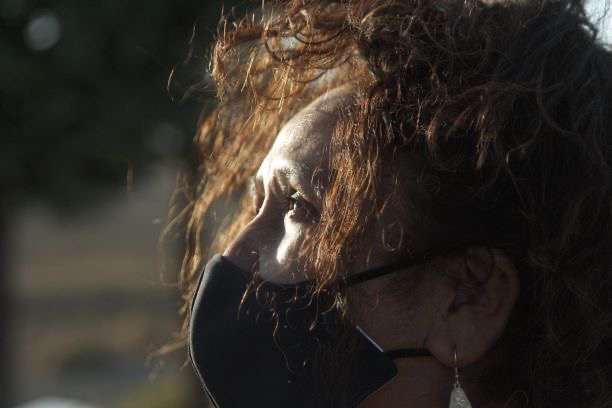Coalition Seeks New Jobs for One Million Black Americans in the Next Decade


Over the past two years, the pandemic has hit the U.S. Black community hard when compared to how many Americans fared over the same time period. Further, many Black-owned businesses often struggled to stay open without the possibility of receiving any assistance, thereby sending the message to Black Americans that they had to forge ahead on their own.
For many Black youths who see this in their communities, while finding themselves denied the educational opportunities their peers in wealthier neighborhoods take for granted, their future prospects appear even more dire. That's especially true when looking at the U.S. unemployment rate by race, which has been stubbornly far higher overall for Black Americans than whites and Hispanics.
The long-term results of this disparity include the ongoing wealth gaps between white and Black households. Depending on the source, the median wealth of white families has approached $200,000 while the data suggest Black families’ median total wealth is less than $25,000.
Federal agencies such as the U.S. Department of Labor have recently announced more funding designed to serve youth who haven’t been shown doors that could open for better opportunities in both education and employment. Clearly, however, more can and should be done on this front.
For many, the intuitive solution that comes to mind is simply “get a college degree.” Nevertheless, the cost of higher education is out of reach for many families. To that end, if the private sector wants to ensure that it will always have a reliable pipeline of talent, then it needs to do its part.
Editor's note: Be sure to subscribe to our Brands Taking Stands newsletter, which comes out every Wednesday.
One coalition, a partnership between Grads of Life and OneTen, believes it has a solution.
Grads of Life is a nonprofit with a staff determined to eliminate any divides between employers and all qualified job applicants. Its approach is to work with companies in order to secure equity in employment by launching DEI (diversity, equity and inclusion) strategies that can both improve lives and generate tangible benefits for businesses.
OneTen is focused on a similar mission, one that is centered on finding ways for Black Americans to be hired for jobs that can support a family. Such jobs, according to MIT’s Living Wage calculator, need to pay in the high $50,000 range to about $90,000 a year, depending on the location in the U.S.
Last week, Grads of Life announced it would accelerate its partnership with OneTen, with the goal to work with Black Americans who do not have a four-year degree. Their measure of success is to help provide 1 million Black youth and adults the tools during the following 10 years so they can land jobs that pay well enough to support a family.
“We know that structural barriers call for structural solutions — and OneTen has responded overwhelmingly to this call,” Elyse Rosenblum, CEO of Grads of Life, said in an emailed statement. “It has been Grads of Life’s privilege to support OneTen and its more than 60 member companies and 250 executives. OneTen’s efforts have already led to more than 20,000 hires and increased access to economic opportunity and mobility for Black talent nationwide. We are excited to double down on this partnership in 2022, engaging employers in new markets and advancing the talent practices necessary for Black Americans to thrive.”
Companies that have so far lined up to participate in this initiative include Accenture, ADP, Caterpillar, Cisco, GM, HP, IBM, Target, Verizon and Whirlpool.
Image credit: Justin Shaifer via Pexels
HerSuiteSpot Helps Businesswomen of Color Succeed, from Side Hustle to Startup


Marsha Guerrier has hit the sweet spot with her virtual network for businesswomen of color. Aptly named, HerSuiteSpot seeks to propel its members toward financial success by empowering them as entrepreneurs and leaders, breaking down negative money beliefs, and replacing those beliefs with a true sense of worth. And it’s working — according to the network, members have increased their revenue by an average of 30 percent.
In the U.S. and Canada, women held less than a quarter of the top executive positions in 2021. That number dropped to a mere 4 percent for women of color. While parity appeared to be nearer for women in general when it comes to lower management, only 12 percent of those positions were retained by women of color. Further, women of color consistently report being undervalued and overburdened at work.
It is this type of corporate culture that inspires Guerrier to help women who look like her find ways around those barriers. She began with the Women on the Rise Conference in 2014, which blossomed into what is now HerSuiteSpot. She told TriplePundit that she saw the need for the network while working for a startup where she and the few other women employed there were being taken advantage of for their knowledge and expertise without any real acknowledgment or gratitude for their work. When the women got together and compared experiences, it became clear that none of them were receiving bonuses, regardless of their contributions. Instead, the men were keeping all of the profits for themselves.
Guerrier explained that executive management seemed to see her, the only Black person at the company, and the few Asian women working there as a way to tick off their diversity markers without utilizing the women to their full potential in the proper positions with the commensurate pay. The disappointment in her voice was palatable as she described the situation, “I’m a woman and I’m a Black person, and I filled those boxes,” she told us.
With the original conference, Guerrier’s goal was to provide an opportunity for women of color to come together and access resources that would help them deal with the marginalization they experience in the workplace and go beyond the hobby state with their own side hustles. Since then, she has expanded into HerSuiteSpot with a huge network that serves as a support group and mastermind. There is a toolkit for business planning and goal setting. There is a video library. There is consulting, coaching, and a career center where corporate sponsors can list jobs, and there is an app to support all of it. There is even capital in the form of monthly $500 HerRise MicroGrants and a virtual pitchfest for entrepreneurs from New York state on March 31 with a $5,000 grant up for grabs.
Capital is an integral part of turning a side hustle into a startup. Yet HerSuiteSpot’s website cites less than 1 percent of venture capital going to Black and Latina women. Guerrier pointed out that while venture capitalists do prefer to invest in people who look like them, it goes beyond gatekeeping. These investors falsely assume that entrepreneurs of color aren’t interested in providing goods or services for a larger market, so when they do invest in Black and Latina-owned businesses, it is largely in the form of hair and beauty products.
With the grants, Guerrier says, “We try to look beyond the average things that they think a woman of color would do,” and strike a balance between products and services. This month the grant will go to an entrepreneur upcycling plastics. Last month it went to a faith-based nanny matching service.
According to HerSuiteSpot, 65 percent of women of color have side hustles, but this isn’t anything new. Guerrier explained that Black women have always had some kind of monetization outside of work — whether it was babysitting, hair-braiding, making skin and hair products, etc. — the language just wasn’t there to describe it as such. The goal with side hustles now is, as she puts it: “We want women to realize it can become bigger than their salary.”
Turning a side hustle into a startup can be intimidating for anyone, even more so for women of color who have been raised without wealth or resources. In addition, Guerrier explains that many are held back by a fear of failure, along with a mindset of scarcity, and the idea that they should be grateful for what they have and not go after more. This is why HerSuiteSpot focuses on mindset as the first of its Four Pillars (the other three are money, marketing and media).
This mindset work is constant and relies on affirmations and reminding. Members are tasked with being fair and kind to themselves while celebrating their wins — something most women struggle with. Guerrier shared one of her tricks with TriplePundit and, without giving away the secret, it sounds like a magical way to borrow the confidence of those who somehow always seem to manage to fail upward.
She also has invaluable advice for parents raising girls of color — “It starts at home.” She encourages parents to actively build confidence in their daughters and expose them to new experiences and non-traditional fields. They need to see success and leadership and be exposed to high-level executives who look like them. HerSuiteSpot will help bring this advice to fruition for 25 girls aged 14 to 18 this summer with the HerRise STEM Squad.
In a corporate culture that continues to favor white males at the expense of women of color, HerSuiteSpot steps in to fill a void and provide a medium through which these women can collaborate and network to further their careers and turn their side hustles into startups.
Image credit: Ono Kosuki via Pexels
How Corporate Collaboration Can Slow the Flow of Microplastics into the Environment


Of all the plastic that has ever been produced, approximately two-thirds has found its way into the natural environment, according to a 2020 study from the European Parliament. From there, plastics can degrade, flow into rivers and enter marine food webs. Scientists have already come up with some solutions that clear the environment of microplastics (like adhesive bacteria or a magnetic liquid), and some businesses are innovating to stop the flow from the start.
How two very different companies started to work together on microplastics
At this year’s Consumer Technology Association conference, Samsung — maker of phones, laptops, refrigerators and more — announced a lineup of sustainability initiatives for its home appliances. Among the initiatives was a collaboration with outdoor clothing retailer Patagonia. That may seem like an unexpected collaboration, Mark Newton, head of corporate sustainability at Samsung Electronics America, told TriplePundit, but when it comes to tackling microplastics, he said it makes perfect sense.
Big issues like microplastics pollution require big thinking — and working together. For Newton, who has worked in corporate sustainability for decades, Samsung’s new collaboration has all the ingredients for success (and not every working relationship does) — from shared values and clear objectives to adequate funds.
What does it take to build a corporate collaboration that actually has a positive environmental impact?
First, Newton noted, Patagonia and Samsung are at the table to work. Patagonia has been working on the issue of microplastics for a while now, because, to be frank, the retailer’s garments are often made with plastic-based materials that can shed in the washer and enter the environment through laundry wastewater. “They are deeply aware that their products are shedding, and they’re doing everything they can to try to avoid that,” Newton said. The apparel company aims to be part of the larger solution to microplastics while minimizing its own contribution to the problem. Patagonia has conducted research on textile design and the breakdown of fabrics, findings that come in handy as Samsung updates its washing machine design. And the retailer knows it can make a bigger difference in solving fiber shedding with a tech company at its side, Newton added.
Patagonia’s choice to work with Samsung was ideal, because the electronics company has already invested in sustainable solutions for its washing machines. Features such as effective cold washes and wash-customizing artificial intelligence already help diminish the ongoing wear-and-tear of fabrics.
Newton said the collaboration’s specificity is a plus. In fact, a successful collaboration needs clear goals — what you’re going to do together and what you’re not, he said. And even if the project leads to only a slight adjustment to the multinational’s washing machines, that can make a big difference. "One of the things that is important about Samsung is our scale,” Newton said. “The small things that we do really amplify across our product line and then across our product sales, so that we can make relatively small everyday changes that have a big impact.” For Samsung, it was also important that the project related to the company’s bigger-picture goals of climate mitigation, building a circular economy, and listening to the next generation of customers. Staying aligned with those larger goals helps keep activities focused, Newton said.
Commitment, investments and time
Finally, Newton added, a healthy collaboration needs adequate resources. Actually putting in the needed time and money for a successful sustainability initiative requires understanding the business case for doing so. Externalities like the impact of mining on local water systems or the effect of microplastics on ocean life are often ignored when designing, manufacturing, or pricing a product. “I think about this way…that if we're bringing these externalities into the decision-making process, we're going to make better decisions, and we're going to be in business longer, which is one way to define sustainability,” Newton said.
But working together, though serious, doesn’t have to be somber. When he first learned his team was going to work with Patagonia, Newton said he was “thrilled,” knowing the value they would bring to the table, and he expects the collaboration will be fun.
Image credit via Adobe Stock
ESG: The Tidal Wave Hitting Businesses in 2022


A growing tidal wave hitting businesses can be summarized in three letters – ESG. The environmental, social and governance investing movement may not have fully grabbed the public’s attention – yet – but it is rapidly growing on national and international business radars. In fact, ESG assets are expected to exceed $50 trillion globally by 2025.
While the vanguard of ESG investing was concentrated in Europe, that started to change in January 2020 when BlackRock, the world’s largest asset manager, told CEOs that “climate risk is investment risk” and going forward sustainability will be “at the center of our investment approach.” BlackRock’s initial shockwave soon became a tidal wave, particularly in the U.S., with more investors signing on and the Securities & Exchange Commission recently proposing mandatory climate disclosures.
Make no mistake: This is not just an issue for publicly traded companies. Those companies, answering to investors and consumers, will pressure their private company suppliers and vendors to become more sustainable.
ESG reporting has become a priority for C-suite leaders and their boards. Much of the attention so far has been focused on carbon, which is relatively “easy” to comprehend, but corporate leaders have said the next “wave” is water. The challenge is they don’t know where to begin or what to do.
Water is a complex problem to tackle because water challenges are diverse, local and shared across many stakeholders in a watershed. Until now, companies typically haven’t thought about water until they didn’t have it, or until the quality was so bad that their operations literally ground to a halt.
Now is the time to start thinking about water in all its complexity. Most of the effects of climate change will be felt through water events, from coastal storm surges to loss of source water from low snowpack and everything in between, leading to more flooding in some areas and drought and scarcity in others. These impacts will leave few companies untouched, and the financial consequences are anyone’s guess, from direct operational losses to hits on investments and financing.
Water issues vary based on how a company uses water and where it is located. We’ve heard much about the drought on the West Coast and how that will affect businesses, particularly those that are heavily water-reliant such as data centers and food and beverage companies. In the Great Lakes region, companies are relatively immune from water scarcity. But even in water-rich regions of the U.S., companies face their own problems of water quantity, such as too much rain, and quality, such as contamination. Plus, we live in a global economy, with supply chains spread throughout the world. So, water issues in China, for example, ripple back to our home markets.
Last summer, Piet Klop, head of responsible investment at PGGM Investments, said it succinctly when a colleague told him, “Water isn't that important because the entire water sector is less than 1 percent of GDP.” The problem, he said, “is that the other 99 percent can't do without it.”
What is needed is good corporate water stewardship practices and technologies to address water-related issues. The first step for any company is to understand how it uses water and the condition of the watershed in which it operates to start building a water stewardship plan. However, good corporate water stewardship practices and technology are not enough—we also need proper reporting practices to accelerate and verify those who are acting as good water stewards.
ESG-related performance improvements and reporting are no longer optional for businesses. You can start the journey today by assessing and addressing your company’s water use and impacts. The worst thing to do is nothing because you will inevitably be engulfed by the tidal wave.
Interested in having your voice heard on 3p? Contact us at [email protected] and pitch your story idea to us.
Image credit: Clay Banks via Unsplash
Native American Massacre Site in Nevada at Risk in Pursuit of New Energy Development


Dust blows south of Thacker Pass along Nevada State Route 293.
When the country's first indigenous Interior Secretary Deb Haaland took office, she vowed to confront a legacy of mistreatment of the U.S. government toward Native Americans and to include their voices in public land decisions.
The Protect Thacker Pass campaign and the tribal group People of the Red Mountain are calling on Secretary Haaland to intervene in plans for a lithium mine at Thacker Pass in Humboldt County, Nevada, 35 miles south of the Oregon border. Natural resources depended on by Native Americans have long been threatened by fossil fuel development. Now, their communities are expected to bear the brunt once again in the mining spree for renewable energies — especially lithium mining, which has already brought great human rights abuses in places such as Chile and Argentina. Many tribes in Nevada are uniting against the new wave of energy extraction calling for the Joe Biden administration to make good on its promises to protect their cultural rights.
“I know one of your main missions is ‘Preserving our historic sites and lands for future generations,’’’ Daranda Hinkey, a young member of the People of the Red Mountain, wrote in a letter on Sept. 7 of last year, “and I know you have said you, ‘remain committed to centering voices and history, and stories of those who have been unrepresented and underrepresented.’ Our people have been overlooked and taken advantage of for too long. We need your help to turn this around.”
Downplayed history of the massacre at Thacker Pass
Thacker Pass, or Peehee Mu’huh in Paiute (Rotten Moon), is sacred to the Paiute-Shoshone people. Tribal elders recall how their ancestors hid in the mountains from U.S. soldiers. "Rotten" is for the blood spilled in those conflicts, and "moon" is for the shape of the pass. In 1865, at least 31 Natives were massacred by the U.S. Cavalry in a battle that led to forcible removal and placement onto reservations across Nevada, Oregon, California, Idaho, Utah and Arizona.
On Sept. 12, tribes from across Nevada gathered at Thacker Pass for a commemoration of the massacre and to rally support to protect the land where their ancestors are said to be buried. Less than two weeks earlier, federal Judge Miranda Du had denied a preliminary injunction brought by the Reno-Sparks Indian Colony, Burns Paiute Tribe and People of the Red Mountain to stop planned archaeological excavation at the site.
Then, on Oct. 1, the tribes' lead attorney, Will Falk, and his co-counsel filed a Motion for Reconsideration in a federal district court which presented Judge Du with arguments that the 1865 massacre means there are human remains present in Thacker Pass. This would mean the Bureau of Land Management (BLM) is obligated to honor the Native American Graves Protection and Repatriation Act, triggering emergency consultation with tribes.
“We have presented BLM Winnemucca with an abundance of significant new evidence showing that the September 12, 1865, Thacker Pass Massacre happened within the proposed mine area,” Falk said. “BLM Winnemucca has ignored this new evidence and will likely destroy the remains of massacred Paiute people with the archaeological digs. So, not only did the federal government perpetrate this atrocity — now, it plans to destroy the physical evidence that it even happened.”
In the BLM’s own public records are archival field notes prepared by a U.S. deputy land surveyor writing in 1868 details of the massacre, the Motion for Reconsideration alleges.
Further evidence provided to BLM by the tribes’ legal counsel includes: An 1865 newspaper clip “Indian Fight in Indian Valley” in the Owyhee Avalanche describes “the extent of the battlefield so great” where “each officer and man went for scalps” and that “several tons of berries, grass seeds, and other foods were completely destroyed.” Other literary references detail eyewitness accounts found in autobiographies and state historical records, according to the motion.
“This counts as American History and the Paiute people are important, not just the artifacts on and in the ground," said Michon R. Eben, Reno-Sparks Indian Colony tribe member and cultural resource manager. "BLM and the archeological firm have failed to acknowledge the massacre and failed to properly engage with tribes.”
Eben said she believes that Thacker Pass should be protected under the National Register of Historic Places. Eligibility for this protection means any excavation must be done with the utmost care, following more stringent protocols than what’s required of standard “data recovery” archeological work, as the potential dig at Thacker Pass is currently categorized.
“It is very likely that the mechanical trenching operations, hand-dug holes, and the surface scraping actions specified in [the projects Historic Properties Treatment Plan] will disturb the Thacker Pass Massacre site and result in the excavation of the remains of the Paiutes shot to death in the Thacker Pass project area,” reads a recent letter from the tribal members to the BLM Winnemucca office. They sent at least three letters to Winnemucca BLM citing massacre evidence and have received no acknowledgment, according to their council.
"The Final EIS [environmental impact statement] prepared by the BLM does not even mention that Peehee mu'huh is named for the massacre that took place there and explicitly denies the existence of any significant traditional or sacred sites within the project area,” said Lucy Gill of the Archaeological Research Facility at UC Berkeley, who has experience in partnerships with Indigenous communities. “I am skeptical that a Historic Properties Treatment Plan created on the basis of such an inaccurate EIS — which proposes no mitigation measures whatsoever in terms of Native American religious concerns — will adhere to best practices for archaeological work on a massacre site, which requires minimally invasive methods and, most importantly, meaningful and ongoing consultation and collaboration."
A BLM spokesperson declined to answer questions, referring to the Final Environmental Impact Statement for information regarding cultural sites.
“Even if the Native American Graves Protection and Repatriation Act is honored, that only gives us the right to oversee the reburial of our dead, not leave them be,” Eben explained. “The idea of reburying our ancestors goes against our culture, and that’s a spiritually distressing task for Paiute and Shoshone People. Imagine if U.S. citizens were asked to remove a European historical cemetery? They’d be in an uproar.”
In case you missed it, you can read part one of this story here.
Interested in having your voice heard on 3p? Contact us at [email protected] and pitch your idea for a guest article to us.
Image credit: Famartin/Wikimedia Commons
How the Power of Partnerships Can Tackle Food Insecurity
Approximately 800 million people around the world go hungry each day. According to the U.N. Food and Agriculture Organization (FAO), about 1 in 3 people worldwide are at risk of food insecurity, a figure that jumped significantly due in large part to the global pandemic.
Mexico, a model of how innovation can address food insecurity
Mexico is one such country in which many of its people confront food insecurity. Despite a lucrative agriculture sector — $33 billion worth of food exports flow northward to the U.S. alone — Latin America’s second largest economy still struggles to feed its own people, and the pandemic has made matters worse. At least 29 million Mexicans, more than 20 percent of the country’s population, are at risk of food insecurity day to day, said María Teresa García Plata, director of Red de Bancos de Alimentos de México (BAMX, or the Mexican Foodbanking Network), during a recent interview with TriplePundit.
To that end, organizations such as BAMX have had to pivot over the past two years, and partnerships with companies can offer much-needed support as food banks struggle to meet the needs of communities across Mexico. In turn, BAMX now has more tools at hand to find creative ways to not only provide food, but essential nutrition programs as well.
“We started 2020 by offering services to 1.4 million people, but by August 2020, we were serving 2.1 million people,” García said. “Despite the situation, we grew, and we also had to establish a safety protocol so we could service the communities and process all the food and care for all the food that we’ve received.”
The massive efforts food banks make behind the scenes
BAMX has long taken a multi-pronged approach to assist families who are in dire need of food. Part of this effort is what García described as “rescuing” food — often surplus product that may be misshapen or in slightly damaged packaging but is perfectly edible, healthful food.
Another source for food banks is food that is close to expiration. “We rescue from supermarkets and from distribution centers,” García continued, “and we work with …many companies and retailers. They all have different policies, so we make different agreements so we can receive this food.”
An even larger piece of this puzzle, however, is procuring enough fresh food to not only feed families, but also ensure nutrition for both parents and children. On one hand, Mexico intuitively has plenty of fresh produce when considering the scale of its farming sector. Gathering those fruits and vegetables before they spoil, however, has proven to be the hard part — and therein lies one way in which BAMX relies on resourceful and dedicated teams of volunteers.
“Forty-seven percent of all the food that we deliver is perishable food from the fields,” García explained. “Perhaps to one farm, it doesn’t make sense to pick his crop of tomatoes because he knows this harvest won’t appeal to U.S. consumers for whatever reason. Or perhaps a crop of cucumbers proves to be too large. Usually, his response is to not pick it, but it’s still nutritious food, so food banks like us need to be there so we can get this nutritious source of food.”
Finally, food banks often must find enough budget to buy other food products so the boxes they deliver to combat food insecurity across communities have a complete nutritional profile. In Mexico that missing element is usually everyday staples like beans and rice. On that point, building strong relationships is critical to allow food banks like BAMX to purchase food that is often unavailable through food rescue programs or contributions from brands or retailers.
This is why BAMX has joined the Nutrition for Zero Hunger (NFZH) campaign, a global initiative started by Herbalife Nutrition. Through NFZH, Herbalife Nutrition and the Herbalife Nutrition Foundation provide critical resources and expertise to communities around the world with the aim of bringing hunger down to zero — an issue which currently affects 1 in 9 people worldwide.
One result of a partnership like this is the impressive amount of food that BAMX can provide for each currency unit (dollar or peso) it receives in cash donations. In the U.S., a food bank is doing well for its local community if it can churn one donated dollar into three or four meals. According to García, BAMX’s overall return is about one to five — and within some of its member food banks, that ratio is as high as one to nine.
Why partnerships absolutely matter during times of crisis
The pandemic has further strengthened the bonds between the global nutrition company and BAMX. “We are very proud of our partnership under the Nutrition for Zero Hunger initiative. Through this partnership in 2021 alone, we are able to provide aid to 11,000 families,” García told 3p. “With this resource, the best result was to be able to procure high-nutrition, valuable food product, which we usually cannot get through donations.”
The result is improved services at 28 of BAMX’s member food banks, with the amount of available food more than doubling while significantly adding to the health benefits of the food packages that the organization was distributing, García said.
The partnerships that BAMX has been able to forge with company initiatives, like Nutrition for Zero Hunger, also generate a ripple effect in addressing food insecurity and improving wellbeing, she added. “Something definitely worth mentioning is that this partnership has enabled and empowered us to boost our efforts, because we have been able to develop relationships with other entities that would agree to partner with us so we could further improve the nutritional value of these food packages,” she said.
Going beyond food donations: Strengthening communities with nutrition programs
BAMX’s work with communities isn’t limited to providing food at times of need. Education, specifically nutrition programs and classes, comprise a key component to ensure that families can score maximum nutritional value from the food that BAMX and community organizations provide them. It turned out that the pandemic and restrictions such as social distancing and shifting to a more virtual model offered its own challenges but created new opportunities, too.
“In early 2020, we had 24,000 volunteers nationwide,” García said. “So, when the pandemic started in March 2020, we had to change our model. We couldn’t have that many people on the ground because of the new COVID-19 safety protocols.”
García, BAMX and the networks of volunteers on which they had long relied had to scramble — and do so quickly. “We had to change our operational models, and those were some of the most challenging months our food banks faced,” she continued. “We had to stop our nutrition programs and had to go from live, in-person programs to social media, using platforms such as Facebook and WhatsApp.”
The result was a complete transformation of BAMX’s popular program, Comer en Familia (Eat As a Family). “The positive impact that we offered with these workshops, using the food that we provided, with a special focus on fruits and vegetables — it helps beneficiaries make better decisions on what to eat, how to manage and how to cook this food. We now have these programs on social media, and we now have more participants, because we had to make these adjustments,” García explained.
Serving communities and families post-pandemic
Despite her accomplishments, and those of BAMX, its corporate partners and its broad networks of volunteers, García emphasized that her work fighting food insecurity is far from finished. In fact, she was bullish, brimming with optimism about the work BAMX could achieve during the next several years.
“The biggest challenge is the growth that we are aiming to achieve. We want to duplicate the number of people being assisted in the next three years,” García said. “It’s a huge challenge, because we need to get enough food to deliver that.”
The means to this end involve more networking with the goal to attain more corporate partnerships for BAMX. “We have been working with different trade associations, signing more agreements, and now this is the year to take real action. Because of the current situation, we must keep growing and we have to rescue more and more food. As the needs of the Mexican people have been growing during the pandemic, we need this quantum leap,” she continued. “We plan to do this by prioritizing different regions of Mexico where too many people are living in poverty, so we want to open more food banks where they are needed.”
García concluded, “Herbalife Nutrition and the Herbalife Nutrition Foundation’s commitment to us through the Nutrition for Zero Hunger Initiative has been global, and this to us is the beginning of an ongoing and hopefully long-standing relationship.”
This article series is sponsored by Herbalife Nutrition and produced by the TriplePundit editorial team.
Images courtesy of BAMX
What's Missing in Climate Intervention Discussions: Risks, Cost and Inertia


Though the pandemic helped the world reduce fossil fuel emissions in 2020, carbon dioxide emissions are expected to rise and reach record high levels in 2023. With the pandemic restrictions ending in many parts of the world, it’s critical to address this forthcoming challenge. How can we prevent emissions worldwide from increasing? And while bouncing back from the pandemic, how can we rebuild our institutions and systems to meet climate change goals and induce others to get on board? These climate intervention questions are just the beginning of an action-oriented discussion for meeting net zero goals. And as we're not on track to meet the goals of the Paris Agreement, it’s time to become more deliberate.
"The science community is not prepared to say to the public 1.5°C is toast, stop talking about that. We're not going to achieve that at all,'" said Wake Smith, author of the book, Pandora's Toolbox: The Hopes and Hazards of Climate Intervention. “There's continuing optimism going back to Paris and the preparations for Paris."
In his book, Smith writes that net zero goals cannot be reached quickly through solely reducing emissions. Instead, we also need massive carbon removal and storage and may need to reduce incoming solar radiation to lower elevated temperatures. Smith writes about the pitfalls of emission reduction solutions which he argues have not been researched or experimented with thoroughly. In an interview with TriplePundit, Smith further discussed the technological economic and policy challenges associated with these solutions.
Net zero emissions via emissions reductions: challenging and expensive
"If doing the right thing remains expensive, it will be a tough sell,” said Smith. According to him, the challenges of greenhouse gas removal are economical and include inducing global partners to invest in this cause. And this method is a big investment as it can substantialize differently. For example, greenhouse gas removal can take in the form of direct air capture (DAC). In this method, chemicals are released in the atmosphere and after interacting with carbon dioxide, the reaction eliminates the toxicant. DAC, however, is costlier than other popular mitigation methods.
Smith proposed a few ways to tackle the excessive costs during his talk with 3p. The first being, a focus on expanding the recapture process. Smith explained that before eliminating carbon out of the general atmosphere, where it is diluted, we should focus on eliminating carbon from smokestacks. With this, carbon capture would be cheaper to remove. In addition, legislation that requires fuel gas capture would accelerate such impacts, too.
The next tool Smith advocates for is solar radiation management. In his book, Smith defines this tool as reducing the amount of energy absorbed by the earth. And for solar radiation management, Smith writes that its challenge is unintended physical consequences. To combat this, Smith explained to 3p that we need to begin researching and experimenting with stratospheric aerosol injections. This theoretical geoengineering tactic sprays quantities of small reflective particles in the stratosphere to cool the planet by reflecting sunlight back into space.
"There remains a great deal of reluctance to begin outdoor experiments, I think it's just wrong-headed and back to the sort of naive optimism," said Smith. "People just can't imagine that we would ever need such a tool so why bother researching it. Well, I can imagine that we may need such a tool."
Innovation is a crucial step to reach global climate goals. And with that, forethought, too. For example, researching stratospheric aerosol injections is especially important as it has a wide range of consequences. Computer simulations suggest that this tool will likely cause droughts in Africa and Asia and have an impact on global ecosystems, rain patterns and ozone chemistry.
Before setting targets and publicizing climate change intervention tools, we clearly need to grasp a better understanding of their effects. And at the most basic level, we must assess if these tools are safe enough to pursue in the first place.
Why we must consider climate intervention strategies and step away from naïve optimism
Smith explained to 3p that there are numerous factors that prevent countries from reaching net zero goals. Besides the lack of research on climate intervention tools and its high costs, there is a lack of a general understanding of the current climate situation and a reluctance to make sacrificial changes.
What we need to do is "wake up and make a more sober assessment of where we are, which would be in service of trying to get the world to begin to be willing to make economic sacrifices," Smith said. He added, "People are by large willing to sacrifice a little on the altar of climate."
Such sacrifices, such as eliminating air travel, are difficult, as Smith made clear to 3p. Nevertheless, he explained that there are other areas on which we can focus. For example, the technology sector can do its part with innovations that could help drive down the cost of climate intervention tools.
Public conversations need to include far more assessments and information about the impact and risks of the climate intervention tools on which we are leaning to reach net zero goals. These are steps we cannot afford to skip or forget amidst optimism. And the best time to get underway with this is right now.
Image credit: Scott Webb via Pexels
The Strong Scientific Link Between Forests and Human Health


Common sense and scientific fact: Human beings benefit from regular contact with nature, including forests. Nonprofits such as the Fresh Air Fund, founded in 1877, have promoted the concept for decades. Studies document the individual mental and physical health improvements to be gained from simple walks in a natural environment.
On a global scale, more consumers understand what deforestation of the Amazon for cattle and other commodity production means for climate change, which translates to negative impacts for human health. Further, the COVID-19 pandemic surfaces increased risk of zoonotic diseases, the transfer of illness-inducing pathogens from animals to humans. These are lessons that should have been more deeply embraced from past waves of avian influenza, swine flu, HIV and Ebola, among others.
These seemingly distinct issues — the benefits of a walk in the woods and the prevention of worldwide death — have a common denominator: forests.
A new report by the World Wildlife Fund (WWF) called The Vitality of Forests gives the public, private and nonprofit sectors a ground-to-aerial view of the scientific links between forests and human health. WWF advances what it calls a “holistic framework” that pulls together all the interconnected systems that link humans and forests.
The publication is a digestible 55 pages that illustrate how forests have an impact on water and air quality for the better and provide a variety of benefits, from food to much-needed protection from natural disasters. Forests and vegetation also defend against excessive heat and drought; improve biodiversity that inhibits the spread of zoonotic diseases, and much more, including making that walk in the woods possible.
In addition to its sobering statistics — the planet has lost 40 percent of its forests, including the conversion of 17 percent of the Amazon in just 50 years — the report advocates a four-part systems approach to promoting forest and human health: protect and prevent forest conversion; improve forest and land use management; restore forests through diversified approaches; and create urban forests.
This opens a wide door for any business to assess where it can modify its operations beneficially and cost-effectively, whether to examine its supply chain for forest-adverse vendors and practices, to site its next facility on land already in commercial use, or to focus on carbon emission reduction, to name a few.
Further, WWF illustrates the four layers of the earth’s population geographically relative to forests: directly dependent on forests, rural, suburban and urban. For companies already deep into target market modeling, it’s not a stretch to consider folding forest and human health support into its delivery systems, workforce retention and marketing.
The report also does a good job of breaking down the different sectors affecting human beings such as nutrition, noncommunicable diseases (diabetes, cardiovascular, cancer, etc.), infectious diseases (including zoonotic illness), and physical accessibility. To its credit, the WWF also identified knowledge gaps, areas requiring more study so reliable actions can be taken. It also candidly points out negative aspects of human contact with nature to be considered, such as Lyme disease and dangerous animal confrontations.
So what does a corporate commitment to the forest-human health connection look like? Based on the WWF’s report, the possibilities are extensive. Freeing a supply chain of harmful sources isn’t easy, but Groupe Danone gains recognition by various ranking organizations for its efforts. The company reports on its sourcing progress for palm oil, soy and pulp products, thus adding transparency to the toolbox.
Supply chains are just one target. Some companies aim for investment in reforestation technology. Others seek out LEED certification for building design. Rooftop forests and gardens are feasible and growing in number.
Sponsorships support access to the wild for the disabled. For corporations seeking to reduce poverty and household air pollution as well as combat degradation of forests and vegetation, funding and technical support for clean cooking initiatives in developing nations creates a multiple win.
And, come on, who wouldn’t like a fruit orchard on their company’s campus?
The WWF report is thought-stimulating. It’s an ethically-sourced coffee for business and industry brains.
In one place, it’s good to see both the forest and the trees.
Image credit: Geran de Klerk via Unsplash
These Women Say A Tech ‘Returnship’ Is Offering Invaluable Training, Support to Re-Enter the Workforce


Balancing a career with the demands of family life is a consistent challenge for women. Pew Research has found that women disproportionately bear the costs in terms of career advancement and work-life balance. The COVID-19 pandemic exacerbated these trends.
When the pandemic hit, it created more of chasm between working women and their careers, as many found themselves also filling the roles of remote teacher and office manager in their own homes. The most recent annual Women in the Workplace study by McKinsey and LeanIn.org found that 1 in 3 women considered downshifting their careers last year or leaving the workforce altogether because of the increased burden on themselves and their families.
T-Mobile’s TechX Returnship, a six-month, full-time, paid return-to-work program, launched in the fall of 2019 to help people update their skills and work experience after an absence from the workforce. “In 2019, the TechX Returnship started off as a field test to do better with an understanding of the value diversity and women in technology bring to the business,” Joanne de Guzman, senior technology program manager for the TechX Returnship, told TriplePundit. “Over the course of two years, it’s been a privilege to be part of making that concept into a reality and observing the direct impact that has spanned across technology.”
T-Mobile has transitioned 81 percent of Returnship participants into full-time roles at the company since the pilot program launched, de Guzman said. When COVID-19 hit and people were forced out of their jobs due to layoffs and shifting priorities at home, this work suddenly became all the more relevant. de Guzman and her team looked to tailor the program to meet these challenges head on — including “opening up remote and hybrid opportunities so people who may not be able to afford living in high cost living cities, like Seattle, could contribute to T-Mobile,” she told us.
The latest cohort in particular emphasizes helping working mothers and others displaced by the pandemic. The cohort is 78 percent women and 74 percent people of color, with an average of 12 years of work experience and six years of a career break. “This speaks to the level of commitment from our leaders and advocates, who value this hidden talent pool of workers who are skillful and ready to contribute to the workforce,” de Guzman said. “Every time I talk about this, it gives me goosebumps.”
“Your confidence is shaken.” Women share their experiences of taking a break from work.
There are myriad reasons why a person leaves the workforce. Valerie Chyong-Tzyy Huang, one of the most recent “Returners” in T-Mobile’s program, took a leave of absence to raise her family — leaving a successful telecommunications career behind. With her children now in middle school, she says she’s ready to return to work, put her education and skills to use, and be a role model for her 13-year old daughter and other young women.
She soon learned returning to the workforce after an absence is not just about skills, but also about the mindset that creeps in during time away. “I never thought anyone would employ me,” Huang told TriplePundit. And something else had shifted for her: what she wanted to do. “The first time around, you’re a new undergrad with student loans, and money is a big driver,” she said. “Now I want a job to be more meaningful.”
Gillian Stubblefield, another Returner in the latest cohort, shared similar emotional challenges. As an entrepreneur, she launched an education-focused company and worked with private schools and U.S. embassies overseas doing community outreach. In 2016, she transitioned out of the workforce, but did not plan for it to be such a long absence. The psychological toll it took on her was similar to what Huang experienced. “After being out of the workforce for a while, your confidence is shaken,” she told us.
Stubblefield looked for opportunities to use her transferrable entrepreneurial skills, but she could not seem to get the satisfaction she was looking for. “There are clear barriers when there’s a gap in your resume,” she said, “especially when they ask for references.”
Both women gave continuing education a try — including taking courses and obtaining certificates — but they struggled to find the right fit, and their frustrations compounded by continued pressure related to the pandemic. The challenges as they tried to reenter the workforce took their toll, but the feasibility of what a new career would look like was equally daunting. “During the pandemic, my whole family’s home,” Huang told us. “I knew I couldn’t honestly spend 40 hours somewhere else.”
When the announcement of the Returnship landed in their inboxes, both wanted to see what it was all about.
The TechX Returnship offers support and a foot in the door
“Thinking about returning during the pandemic was challenging,” Stubblefield said. "The chances of getting a job when I saw so many people losing jobs wasn’t getting my hopes up.” Huang agreed, saying: “I didn’t have a lot of hope I’d get an interview.”
The TechX Returnship’s cohort model created an instant network, supported by staff from T-Mobile and ReacHIRE, the partner company that manages the program, through trainings and team assessments. “I’ve never been onboarded like this before,” Stubblefield told us. “It’s one thing to offer an opportunity for women to come back into the workforce after a break, but to build our confidence as well. The cohort model with shared experiences to go through this together is such a great way to support each other.” She also appreciated that returning to the workforce as an older person was embraced in the program that prioritizes skills and experience. “I rocked my gray hair, and it didn’t phase anyone,” she said. “I was accepted for what I could bring to the table."
“It was surreal to think I was in the office working,” Huang added. “The fact that I’m working. Is this real? They build a huge safety net, and you feel that everyone wants you to be successful on this. A lot of us are going through the same emotions, but with the cohort, it’s comforting that we’re not doing this alone.”
Volunteer, network and learn: Advice for those re-entering the workforce
The Returnship has offered these high-achieving women a place to update their already strong set of skills. For others looking to re-enter the workforce after a time away, both Huang and Stubblefield offered similar advice: volunteer, build up your network and look for opportunities to learn.
Huang, for example, taught Chinese classes at the start of her return-to-work journey, while Stubblefield volunteered helping disadvantaged students prepare for higher education. “It’s a way to rebuild your confidence and contribute to a cause you’re passionate about,” Stubblefield told us. “Keep learning, building personal and professional skills. Clean up your LinkedIn. Seek out new opportunities. The worst thing they can do is say no.”
Huang added that continuing to learn and serve also helped refine her goals. “You have to understand your purpose,” she explained. “Focus on your mission, and it’s easier to keep going. My mission wasn’t just to get a job, but also to help other women. You have to believe in what you’re doing. Everyone’s path is different. Through this experience, you know yourself better.”
Through the Returnship, both women have been given opportunities they did not foresee. For example, the day before speaking with TriplePundit, Stubblefield participated in a small meeting with the CEO of T-Mobile. And she’s found a new way to serve her passion by working on a team (the T-Mobile Accelerator) that helps startup companies in the tech space.
Returning to the workforce after an absence has its challenges, but programs like the TechX Returnship can help build skills and networks while creating a supportive work environment. While many Returners stay with T-Mobile at the end of the program, it can be a launching pad for going anywhere. “We’re in this program, keeping our feet on the ground and doing the work,” Huang said. “What happens after, only the future can tell.” Walking through that open door is the first step.
This article series is sponsored by T-Mobile and produced by the TriplePundit editorial team.
Image credit: NDABCREATIVITY/Adobe Stock, Brandy Kennedy/Unsplash
Plans to Mine Lithium at Thacker Pass Clash with Indigenous Rights


Myron Smart, a community member of the Fort McDermitt Reservation, gives the author a tour of his community's land which could be negatively impacted by the planned lithium mine at Thacker Pass.
An ancient landscape and known massacre site sacred to Indigenous communities throughout the West face possible desecration at the proposed Thacker Pass lithium mine, 35 miles south of the Oregon-Nevada border in Humboldt County.
Environmental and tribal activists have been camped out at Thacker Pass — or Peehee mu’huh in Paiute — for nearly 10 months to halt construction by Lithium Nevada, a subsidiary of the international mining corporation Lithium Americas. The Thacker Pass Lithium Mine project, which would develop the nation’s largest known reserve of lithium in the name of the “clean energy transition,” has encountered mounting obstacles for its potential harms to the environment and local communities.
On Sept. 30 of last year, the Bureau of Land Management (BLM) issued an archeological permit which would allow a contractor hired by Lithium Nevada to excavate Thacker Pass following an approved plan known as the Historic Properties Treatment Plan (HPTP). But tribal leaders said they were not properly consulted and condemned any potential disturbance brought to their ancestors’ graves.
“Our trust has not been held responsibly,” said Arlan D. Melendez, who has served as chairman of the Reno-Sparks Indian Colony for 26 years. “We’ve given up enough. This treatment of the land goes against our culture and way of life. It never seems to end. We are always in this protective fight.”
Dig at Thacker Pass threaten sacred site: 'This isn’t how ethical archaeology is done'
When mining companies form agreements with the BLM in areas known to have artifacts and historical significance, they are obligated to follow guidelines created in the HPTP under the National Historic Preservation Act. But the cultural significance of Thacker Pass to surrounding tribes has been undermined and not properly addressed by the BLM and Lithium Nevada, according to many tribal members.
“We have all these federal laws to guide the project, not to give us tribes a way to fully protect our culture,” said Michon R. Eben, Reno-Sparks Indian Colony tribe member and cultural resource manager.
To date, the representatives for the tribes maintain they have not been properly treated throughout the permitting processes. BLM has not acknowledged Thacker Pass as a massacre site in any communications with Eben, he said.
Given the violence of the settler-colonial era when the U.S. Cavalry forcibly and brutally removed Indigenous peoples from their land, treating the sites of that bloody history with reverence is of great importance to tribal leaders, and at the heart of what is at stake. The conflict at Thacker Pass could be the first of many land disputes as the new wave of mining for “critical” minerals like lithium stands to potentially jeopardize the land and cultures of more Indigenous communities — following more of the same ecological and cultural damages brought by fossil fuel extraction.
The archeological dig is the first step to clearing the way for an open-pit lithium mine spanning almost 18,000 acres across old-growth sagebrush habitat. It’s viewed by opponents as the beginning of the assault on the land.
"Without meaningful, ongoing consultation with all tribes that attach religious and cultural significance to Peehee mu’huh, which the BLM has not engaged in, such invasive archaeological work can amount to the further desecration of Indigenous sacred sites,” said Lucy Gill of the Archaeological Research Facility at UC Berkeley, who has experience in partnerships with Indigenous communities. “This isn’t how ethical archaeology is done.”

Indigenous communities say they aren't being consulted
The tribes have consistently protested the lack of comprehensive consultation with the Indigenous communities throughout the development of the Thacker Pass Lithium Mine project. The Bureau of Land Management has been accused of “fast-tracking” the permits and issuing an inaccurate and incomplete Record of Decision, allegations that are the subject of two lawsuits brought by rancher Ed Bartell and four environmental nonprofits.
On Sept. 3, federal Judge Miranda Du denied a preliminary injunction brought by the Reno-Sparks Indian Colony, Burns Paiute Tribe, and Atsa Koodakuh wyh Nuwu/People of Red Mountain (members of the Fort McDermitt Paiute-Shoshone reservation) which are located nearest to the mine and could suffer health impacts from potential air and water pollution. The lawsuit sought an emergency halt to any archeological digging.
The legal arguments alleged that the BLM violated the National Historic Preservation Act in permitting the mine. The lead attorney for that case, Will Falk, said the BLM did not attempt in “good faith” to consult those who attach cultural significance to Thacker Pass and “handpicked” a few tribes suffering as a result of the pandemic knowing they’d struggle to respond. The main arguments by Falk espouse the irreparable distress that tribal members would suffer if Thacker Pass was desecrated.
“This breaks my heart,” community leader Myron Smart, a member of the Fort McDermitt Paiute-Shoshone reservation, said. “My belief is that you don’t go digging through cemeteries. How would they like it if someone went to Arlington National Cemetery and started removing all the grass, putting bones in plastic bags to be kept in lockers? They are violating our ancestors lying there. Why aren’t they afforded the same respect?”
Eben said this is the least the BLM has done to consult with Indigenous authorities in the more than 16 years she's held per position as a tribal leader. Typically, she said, tribal members are included in-person at the cultural sites to counsel on the whereabouts of artifacts and burial grounds and to help ease the overall disturbance. “We did not hear about this mine until it was too late," she said, "and no tribal members have been asked to advise at the time of the survey, authoring of cultural inventory reports, HPTP, and MOA (Memorandum of Agreement). All of which are related to Paiute and Shoshone culture. This is not appropriate.”
Legal representation for the BLM asserted during the hearing on Sept. 3 that they mailed letters to tribal offices according to protocol. Representation for Lithium Nevada agreed and stated that “substantial consultation” with local tribes occurred.
“What they are calling adequate consultation is the fact that the BLM sent three letters to three different tribes.” Sitting at her desk in the Cultural Resources office in Reno, Eben motions to a heaping stack of papers. “These letters can easily be overlooked, especially during COVID,” she said. “And not all tribes have the resources to field this kind of communication; it’s not sufficient. And they chose to inform us at the end of the permitting process. That’s not appropriate. That’s a way designed to simply check a box.”
“Lithium Nevada is working hard to ensure impacts to historic artifacts are mitigated,” Tim Crowley, vice president of government affairs and community relations for Lithium Nevada, said in June.
Judge Du acknowledged the sacredness of Thacker Pass to the tribes but said the National Historic Properties Act "does not give the tribes the right to prevent all digging in the entire project area. It merely provides for consultation."
“It’s all about 'mitigation,'” Eben said. “For Native Americans, this is a government-sanctioned way to loot our artifacts. The treatment plan is based on discriminatory language and is in direct disrespect to our history.”
In part two of this story, we take a closer look at the downplayed history of the massacre at Thacker Pass and what’s next in the fight to protect the sacred site.
Interested in having your voice heard on 3p? Contact us at [email protected] and pitch your idea for a guest article to us.
Images courtesy of the author